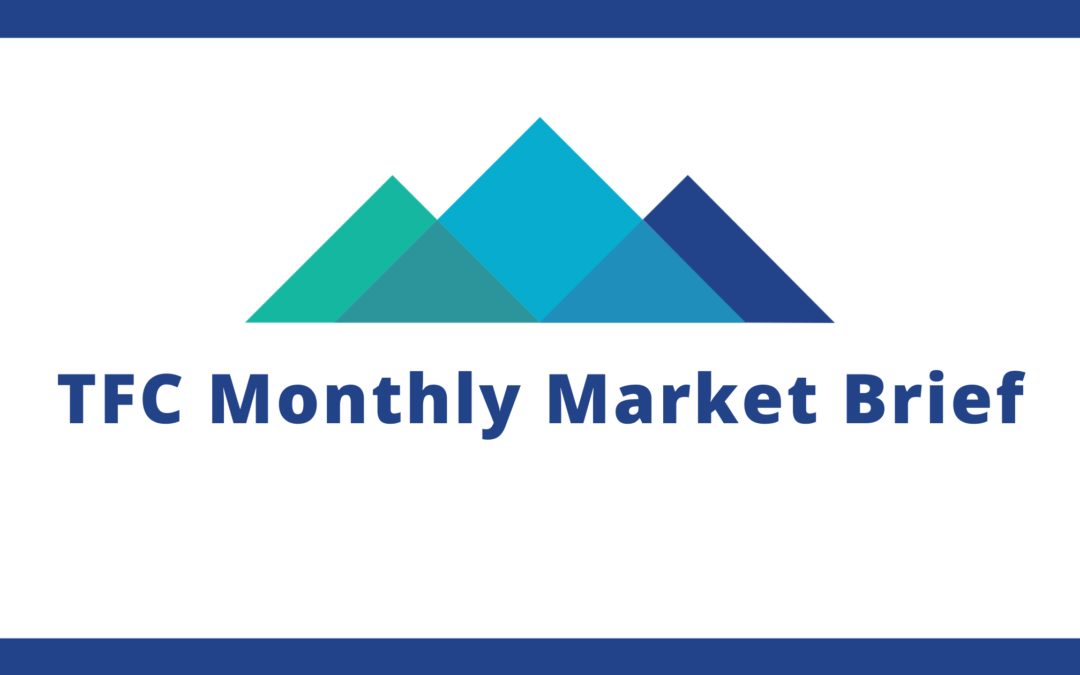There was no shortage of risks to start the fourth quarter! The bright spot was another solid earnings picture – Q3 earnings season will end up verifying much better than analyst expectations as corporate American recovers from the devastating recession earlier this year. Stocks fell during October as the market felt uneasy regarding rising COVID-19 cases sweeping across Europe and much of the mid-section of the USA. Making matters worse were stimulus talks that effectively got put on hold until after the election. Uncertainty around the election also cast a shadow of doubt in the world of stocks.
All in all, the S&P 500 fell about 3% for the month while the Dow lost 5%. The tech-heavy NASDAQ Composite dropped just 2% despite volatility in the big firms like Apple & Amazon. Small-cap companies as measured by the Russell 2000 managed to finish ahead by 2%. Elsewhere, foreign stocks declined by 2% while the US bond market fell just fractionally as interest rates increased just a little bit. The US high yield fixed income market provided a small increase when dividends were included.
1-Year Stock Market Performance

Equities were faring ok until the last week of October – that’s when it became clear that our friends on Capitol Hill were not going to reach a stimulus agreement. Europe’s second wave of the virus caused officials overseas to enact another round of restrictions in various countries. It’s important to remember that October can be a scary month for investors – we saw that with the Dow dropping nearly 1,000 points in a single session on October 28. Of course, 1,000 points today ain’t what it used to be! That’s just a 3% move while 10 years ago it would have been a 10% change. Perspective and context are always good things. In the last year, the US stock market is still ahead by 7%.
But what else is going on? The stock and bond markets are not everything. The IRS released the 2021 retirement plan limits. It’s bad news for those looking to save more in a 401(k) and IRA; the limits were unchanged from 2020. Savers can still contribute up to $6,000 per year into a Traditional or Roth IRA (or a combination of the two account types) and 401(k) investors are held at $19,500 annually in maximum payroll contributions. The Health Savings Account (HSA) maximum allowable contribution inched up to $3,600 for an individual and $7,200 for a family – remember, you must purchase a qualifying High Deductible Health Plan to contribute to an HSA. As a heads-up – you only have until year-end to contribute to a 401(k), but you have until the tax deadline in 2021 to make 2020 IRA contributions.
Catch-up contributions for older individuals were unchanged as well – For IRAs, the catch-up contribution is $1,000 for those aged 50+. For 401(k)s, it is an extra $6,500 for those aged 50+. For HSAs, if you are 55 or over, you can contribute an additional $1,000.
2021 IRA Contributions
 [1]
[1]

We have good news for those on the hunt for a new house or if you considering a refinance – mortgage rates remain very low. Freddie Mac publishes the latest rates each Thursday, and the final reading during October revealed yet another all-time low on the 15-year fixed-rate mortgage. What’s great for consumers about the current environment is that mortgage rates are ticking to new lows while Treasury rates are actually steady to climbing. How can that be? Well, back in the spring, banks were very uneasy with all of the volatility, but the fixed income and lending markets have calmed from those tumultuous times, so the ‘spread’ between Treasury rates and mortgage rates has narrowed – this is great news for prospective homeowners. Meanwhile, the housing market continues to be very strong across the country as folks leave urban dwellings for the suburbs.
[1] https://www.entrepreneur.com/article/358668


